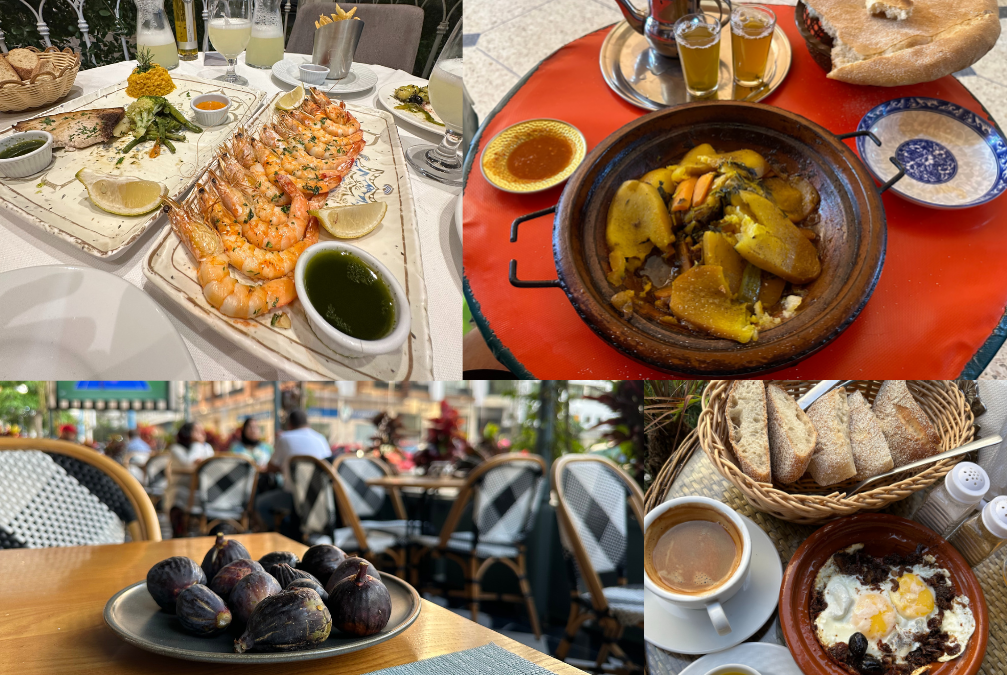Cultural hybridization is a fascinating phenomenon where different cultures blend to create something entirely new and unique. Imagine it as a tapestry, where threads from various cultural fabrics are woven together, resulting in a rich and diverse pattern. This process can be seen in numerous aspects of our lives, from cuisine and language to music and fashion. Notably, it’s not just a modern occurrence; cultural hybridization has been shaping societies for centuries, ever since different communities started interacting and exchanging ideas.
One of the most striking examples of cultural hybridization is the fusion of culinary traditions. Think about the Tex-Mex cuisine, a delicious blend of Mexican and American flavors, or how Japanese sushi has integrated avocado, a fruit native to the Americas, into its rolls. Music also illustrates this blend beautifully, with genres like reggae, which combines traditional African rhythms with Caribbean mento and American jazz. These examples are just the tip of the iceberg in a world where cultures constantly collide and merge, creating a vibrant and ever-evolving global tapestry.
What is Cultural Hybridization?
Cultural hybridization refers to the process in which different cultural elements blend together to form a unique, distinct culture. This fusion typically occurs as diverse cultures interact, exchange, and integrate ideas, customs, practices, and technologies, resulting in innovative cultural expressions. Evident in various domains such as cuisine, language, music, fashion, and art, cultural hybridization is often driven by globalization, migration, and digital communication. This dynamic interplay between local and global influences underscores the fluid and evolving nature of culture.
Cultural hybridization frequently leads to the creation of hybrid identities, where individuals adopt elements from multiple cultures. Examples of this include bilingualism, eclectic fashion styles, or fusion cuisine. Importantly, cultural hybridization is distinct from cultural assimilation, which implies the absorption and potential erasure of one culture by another. Instead, cultural hybridization involves a reciprocal exchange, where each culture involved undergoes transformation.
This phenomenon is increasingly relevant in our interconnected world, as technology and travel enhance cross-cultural interactions. It challenges traditional views of culture as static and homogenous, presenting it instead as dynamic and constantly evolving. Cultural hybridization enriches and diversifies global society, fostering mutual understanding and respect among different cultural groups. This process demonstrates human creativity and adaptability in navigating changing social and global contexts.
Examples of Cultural Hybridization
1. Tex-Mex Cuisine – A classic example of cultural hybridization is Tex-Mex cuisine, which blends Mexican culinary traditions with American tastes and ingredients. Dishes like nachos, fajitas, and chili con carne, which are popular in the United States, have roots in Mexican recipes but were adapted to suit American palates, often with added cheese and beef.
2. Bollywood – Bollywood, the film industry based in Mumbai, India, is a blend of traditional Indian culture with influences from Western cinema. Bollywood movies often combine elements of Indian classical and folk dances with Western styles, along with a unique mix of music, storytelling, and fashion that appeals to both local and global audiences.
3. Reggae Music – Originating in Jamaica, Reggae music is a blend of traditional African rhythms, American jazz and blues, and Caribbean mento. The genre was popularized globally by artists like Bob Marley and is notable for its rhythmic style and often socially conscious lyrics.
4. California Roll – A Westernized version of the Japanese sushi, the California Roll reflects American tastes by including ingredients like avocado and crabmeat. It’s an adaptation of traditional sushi that caters to those less accustomed to raw fish, illustrating culinary adaptation and exchange.
5. Spanglish – Spanglish is a linguistic blend of Spanish and English, often spoken in communities with both English and Spanish-speaking populations, like in the United States. It involves mixing elements of both languages, from borrowing words to alternating between languages in conversation.
6. Japanese Anime – Anime, or Japanese animation, has been influenced by Western animation techniques but has developed its own unique style. It features a blend of traditional Japanese storytelling, art, and themes with Western elements, creating a globally recognized and distinct genre.
7. Chinatowns Worldwide – Chinatowns in various cities around the world are prime examples of cultural hybridization. These neighborhoods blend Chinese cultural practices, foods, and architectural styles with those of the host country, creating unique urban cultural enclaves.
8. Creole Languages – Creole languages, like Haitian Creole or Papiamento in the Caribbean, are languages that evolved from a mixture of different languages. They typically originate from contact between European colonizers and African slaves, blending elements of European languages with African and indigenous languages.
9. Yoga in the West – The practice of yoga, originating in ancient India, has been hybridized in Western cultures. While retaining its core principles and techniques, yoga in Western contexts often focuses more on physical fitness and includes elements of Western wellness philosophies.
10. K-Pop – South Korean pop music, or K-Pop, is a vibrant blend of traditional Korean music elements with Western pop, hip-hop, and electronic music. The genre is characterized by its diverse music styles, fashion, and meticulously choreographed dance routines, appealing to a global audience.
11. Caribbean Carnival – The Caribbean Carnival, particularly notable in Trinidad and Tobago, blends African, European, and indigenous traditions. It’s a colorful, festive event that combines African music and dance, Christian pre-Lenten celebrations, and indigenous costumes and storytelling, resulting in a unique cultural festival celebrated worldwide.
12. Afrobeats Music – Originating in Nigeria and Ghana, Afrobeats is a music genre that combines traditional African music styles with American funk and jazz, along with influences from West Indian Calypso. The result is a rhythmic, danceable sound that has gained popularity worldwide.
13. Fusion Cuisine Restaurants – Fusion cuisine restaurants creatively combine elements from various culinary traditions to create innovative dishes. Examples include sushi burritos (Japanese and Mexican), Korean tacos (Korean and Mexican), and curry pizza (Indian and Italian), demonstrating a playful and inventive blending of global flavors.
14. Chicano Art – Emerging from the Chicano movement in the United States, Chicano art blends Mexican-American experiences with elements of American and Mexican culture. It often incorporates pre-Columbian, indigenous, and religious symbols to make social and political statements.
15. Martial Arts Fusion – Modern martial arts practices often blend different styles from various cultures. Brazilian Jiu-Jitsu, for example, combines traditional Japanese Jujutsu with Western wrestling, while Mixed Martial Arts (MMA) globally combines techniques from various martial arts traditions.
16. Global Street Art – Street art around the world often reflects cultural hybridization, with artists blending local themes and traditional art forms with global and contemporary influences, creating unique styles that reflect both the local and global culture.
17. Turkish Soap Operas – Turkish soap operas, or ‘Dizi’, have become popular across the Middle East, Eastern Europe, and Latin America. They blend traditional Turkish storytelling with the structure and style of Western soap operas, resonating with diverse global audiences.
18. Cajun and Creole Cuisine in Louisiana – Louisiana’s Cajun and Creole cuisines are a blend of French, African, Spanish, and Native American influences. Dishes like gumbo and jambalaya showcase this cultural mixing, reflecting the diverse history of the region.
19. International Fashion Fusion – Modern fashion often reflects a hybridization of styles, where designers blend traditional attire from their own cultures with global fashion trends. This can be seen in collections that mix traditional African, Indian, or Asian textiles and designs with contemporary Western fashion silhouettes.
20. Turkish-German Cinema – Reflecting the experiences of Turkish immigrants in Germany, this cinema genre blends Turkish cultural themes with German cinematic styles. It often explores the complexities of identity, belonging, and cultural differences, offering insights into the lives of people navigating multiple cultural realities.
The Role of Globalization in Cultural Blending
Globalization, the ever-accelerating exchange of ideas, goods, and people across the globe, has been a powerful force in shaping cultural landscapes. It has effectively diminished the boundaries that once segregated cultures, leading to an unprecedented era of cultural hybridization. As our world becomes increasingly interconnected, cultures naturally evolve, borrowing and blending elements from one another.
Picture the immense network of cultural exchanges facilitated by globalization. The internet, social media, and international travel have created a melting pot of global influences, where a teenager in Tokyo can be just as influenced by a pop song from South Korea as one from the United States. This has resulted in cultural hybridization at a speed and scale previously unimaginable.
While this blending can be seen as a celebration of cultural diversity, it also raises questions about cultural authenticity and preservation. The rapid spread of dominant cultures, often from economically powerful nations, can sometimes overshadow and dilute local customs and traditions. This leads to a global cultural landscape that is both richly diverse and yet paradoxically homogeneous in certain aspects.
Moreover, cultural hybridization isn’t just about arts and entertainment; it manifests profoundly in language, fashion, and food. Take, for instance, the ubiquity of fast food chains adapting their menus to local tastes across the globe. Or consider how English, interspersed with local dialects, has formed entirely new versions of the language in different parts of the world.
However, it’s important to recognize that cultural hybridization is not a one-way street. It is a dynamic process where all cultures involved can be both influencers and influenced. The global appeal of Hollywood movies is a prime example, yet these films increasingly incorporate elements from different cultures, be it in storytelling, casting, or setting.
As young people grow up in this intertwined world, their cultural identities become more complex and layered. They’re not just citizens of their birth country but also participants in a global community, with access to a rich array of cultural experiences. This generation’s identity is more fluid, defined not just by local traditions but by global influences as well.
In conclusion, globalization has acted as a catalyst for cultural hybridization, creating a world where cultural exchange is constant. It presents an opportunity for greater understanding and appreciation of diverse cultures while also posing challenges to cultural preservation. In navigating this, we find the beauty of our shared humanity – a mosaic of traditions and innovations, evolving together in a connected world.
How Does Cultural Hybridization Affect Society?
Cultural hybridization profoundly influences society in multifaceted ways. At its core, this phenomenon reflects our world’s increasing interconnectedness, a place where traditions and customs no longer exist in isolation. This fusion impacts society on various levels, from the daily routines of individuals to the broader spectrum of global relations.
One of the most tangible impacts of cultural hybridization is the enrichment of our daily experiences. The foods we eat, the music we listen to, and the films we watch are often a patchwork of different cultural influences. A simple meal, for instance, can include ingredients and cooking methods from multiple corners of the world, showcasing a culinary crossover. Such everyday occurrences, while seemingly mundane, are subtle reminders of our shared global heritage and the ongoing dialogue between cultures.
Beyond personal experiences, cultural hybridization also reshapes identities. In an era where people often have multifaceted backgrounds, identities are increasingly complex. Individuals might find parts of themselves reflected in various cultures, creating a more inclusive and comprehensive understanding of self. This blending can encourage a broader perspective, fostering a sense of belonging in a global community rather than a single, isolated culture.
However, cultural hybridization also brings challenges, particularly in terms of cultural preservation. As dominant cultures exert their influence, there’s a risk of overshadowing smaller, indigenous cultures. This tension raises important questions about the balance between embracing a global culture and preserving unique cultural heritages.
On a societal level, cultural hybridization encourages innovation and creativity. By merging different viewpoints and approaches, new ideas and solutions emerge, pushing societies towards progress and development. This can be seen in diverse fields, from technology and business to art and academia.
Furthermore, cultural hybridization plays a pivotal role in fostering empathy and understanding among different groups. Exposure to a variety of cultures can reduce stereotypes and misconceptions, paving the way for more harmonious global relations. As people learn about and participate in different cultural practices, they often develop a deeper appreciation and respect for other ways of life.
In conclusion, cultural hybridization affects society in profound ways, influencing personal identities, social dynamics, and global relations. It enhances daily life with diversity and richness, drives innovation, and promotes understanding among people of different backgrounds. As our world continues to become more interconnected, understanding the effects of cultural hybridization is key to navigating the complexities of our evolving global society.
Is Cultural Hybridization a Good Thing?
The debate over whether cultural hybridization is a boon or a bane to society is nuanced and multifaceted. On one hand, this blending of cultures fosters a rich tapestry of global diversity; on the other, it raises concerns about the dilution of distinct cultural heritages.
One of the primary advantages of cultural hybridization is its promotion of cross-cultural understanding and empathy. As people are exposed to and engage with different cultural practices and ideas, they often develop a broader worldview. This exposure can diminish stereotypes and encourage a more inclusive perspective. Think of a teenager in a small town grooving to music from another continent, or enjoying a film that showcases life in a distant land. These experiences, facilitated by cultural hybridization, can expand horizons and foster global connectivity.
Additionally, cultural hybridization often leads to creative innovation. When different perspectives and techniques merge, they can result in breakthroughs in various fields, from cuisine and fashion to technology and art. This melding of ideas can be a powerful driver of progress and a source of endless creativity and innovation.
However, the flip side of cultural hybridization is the risk it poses to cultural authenticity. There’s a concern that dominant cultures, particularly those backed by economic or media power, may overshadow smaller, local cultures. This can lead to a form of cultural homogenization, where unique traditions and languages may diminish or even disappear in the face of widespread global cultures.
Another con is the potential for cultural appropriation, where elements of a culture are taken out of context and used in ways that may be disrespectful or harmful to the original culture. This is often a contentious issue in the arts and fashion, where the line between inspiration and appropriation can be blurry.
In conclusion, cultural hybridization is a complex phenomenon with significant pros and cons. While it undoubtedly promotes global understanding and innovation, it also poses challenges to preserving cultural diversity and respecting the boundaries of different cultural expressions. As our world becomes increasingly interconnected, understanding and navigating these nuances is key to appreciating the full spectrum of cultural hybridization’s impact on society.
Your content goes here. Edit or remove this text inline or in the module Content settings. You can also style every aspect of this content in the module Design settings and even apply custom CSS to this text in the module Advanced settings.
Read also: Top 20 Pluralism Examples & Definition
The Most Popular on BitGlint

Gene-Editing Babies: 20 Pros and Cons to Consider
The topic of gene-editing babies is one that stirs a lot of discussion and debate. It's about scientists using...

Top 30 Adversity Examples & Definition
In life, adversity comes in many forms, testing our strength, resilience, and ability to navigate through challenging...

Top 20 Pluralism Examples & Definition
Pluralism represents the fabric of a society woven with varied threads – different beliefs, cultures, and...

20 Moral Absolutism Examples & Definition
Moral absolutism asserts that certain ethical rules are universally applicable, irrespective of context or...

Top 30 Syncretism Examples & Definition
Syncretism, the fusion of different beliefs, practices, or cultures, is a fascinating and widespread phenomenon in...

Top 20 Collective Memory Examples & Meaning
Collective memory forms the bedrock of society, intertwining shared experiences and common knowledge across...

Restaurants in Morocco: Full Guide, Tips & Pictures
Morocco, a land renowned for its rich culture and culinary diversity, offers an array of dining experiences that cater...
Get Inspired with BitGlint
The Latest
Top 30 Altruism Examples & Meaning
Altruism, the selfless concern for the well-being of others, is a principle that underpins some of the most compassionate acts humanity can offer. It's not merely a moral stance but a tangible expression of empathy and kindness that transcends cultural, social, and...

Private Schools: 30 Pros and Cons to Consider
Education is an essential aspect of every child's growth and development, and selecting the right school is a critical decision for parents. Private schools are a popular choice for many parents, offering various advantages and disadvantages that must be carefully...
20 Transcendentalism Examples & Definition
Transcendentalism, a philosophical movement that emerged in the 19th century, profoundly shaped American literature and thought. Rooted in the belief that individuals could transcend the physical world to reach higher spiritual states, it championed self-reliance,...
Top 30 Symbolic Archetypes Examples & Their Meaning
Symbolic archetypes are the building blocks of storytelling, weaving deep significance and universal themes into narratives. This article delves into 30 of the most influential archetypes, unraveling their meanings and the pivotal roles they play across various...

